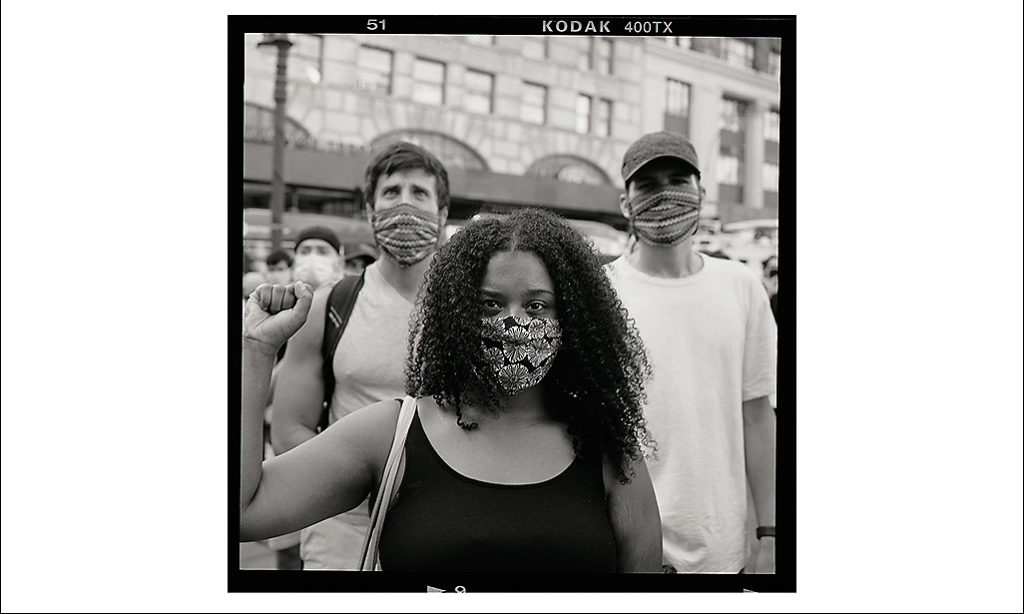In March of this year I was sitting in my studio in New York under lockdown, wondering what I was supposed to be doing as an artist. What should I be looking at, what should I be talking about, what was my responsibility in this strange and terrifying moment?
Then the obvious occurred to me. I lived just seven blocks from Elmhurst Hospital, the first hospital in New York City to overflow with COVID-19 patients. New York was not just the epicenter of the pandemic in the United Sates, but in the entire world. And I lived in the epicenter within the epicenter. My neighborhood and the workers at the hospital were going “unseen.” There were news reports – dire descriptions of a lack of medical supplies and equipment and uncontrolled contagion – but there was nothing to describe visually what living in the neighborhood looked like. On April 3rd, I began work on the Covid Journals.
I did not have an agenda. I only wanted to see as carefully as I could. In the first few weeks I would regularly put on my mask and gloves and walk with my camera to the hospital. I would make images along the way, firemen putting out a car fire a block from the hospital or a masked schoolteacher with her daughter drawing chalk figures alone in the park. I photographed the nurses and EMTs at the hospital, trying to understand what was happening. With all of these subjects, my aim was to describe them photographically as people first, people with names and families, not just the title “first responder.” This is the context I create when photographing. It is my hope that it engenders an environment where the subject feels comfortable enough to share their true self.
As I followed the virus it began to change; just as it does in the body, so it did within the community. The lockdown led to mass unemployment, which created devastating hunger. Food pantries sprung up, organized by ordinary individuals, aided by restaurants who had ample supplies of food, but no one to eat it.
And then it changed again. When we learned of the murder of George Floyd, our already too-full-hearts overflowed into the streets. In spite of isolation and hunger, and in spite of contagion and the pandemic, people raised their voices around the world and in the Borough of Queens to say, “No more.” And so, after “Contagion” and “Hunger,” came the third chapter of the Covid Journals, “Justice.”
But this is a journal whose ending has yet to be determined. Breonna Taylor, Ahmaud Arbery, Daniel Prude, and Jacob Blake are just some of the names of people whose attackers still walk free, without remorse, without consequence. Likewise, the pandemic still continues, unbowed and unconstrained. And all of this unfolds within the context of a presidential election unlike any other. Then there is the matter of a vaccine. Questions of corruption, efficacy, distribution, and acceptance make this as fraught as any pandemic-related problem.
The role of the arts and the artist is complicated in moments such as these. It is very rare that any single work or body of work can shift a culture directly. However, as the arts are also a critical component of culture itself, they create change by definition. It changes how we see our condition, hear our condition, feel our condition, but not the condition itself. It is elusive but profound.
When people speak casually of alternative truths, the frame of reference that supports the arts is threatened. Art deals with physical realities, emotional realities, the real. My images seek to participate in this discourse. All who aid the artist in this pursuit help to support a version of the world where image, music, and language support meaning and not madness. That’s why MacDowell now.
My project, titled “Gunners,” that I worked on last spring in my residency at MacDowell is on hiatus like so many other things during the pandemic. In its place the Covid Journals have arisen to document this moment, and I hope to help expand the conversations we are all having on this moment. My image “Tuesday, June 9, 2020, protesters Brooklyn Borough Hall" (above and on the cover of the upcoming summer-fall newsletter) is an early image from Covid Journals and opens MacDowell’s online “Conversation About Social Justice,” an ongoing series documenting how artists are responding to our times. MacDowell, normally a place where art is made, is seeing new ways to offer support, including providing display space, albeit electronically, for the art its Fellows create.
Why MacDowell Now? Because Artists now. I will continue to chart future shifts in the course of the pandemic and continue seeing as acutely as I can.
Accra Shepp (19) is a photo-based artist whose works are held in a variety of collections, including the Museum of Modern Art, The Art Institute of Chicago, and the Victoria and Albert Museum.

